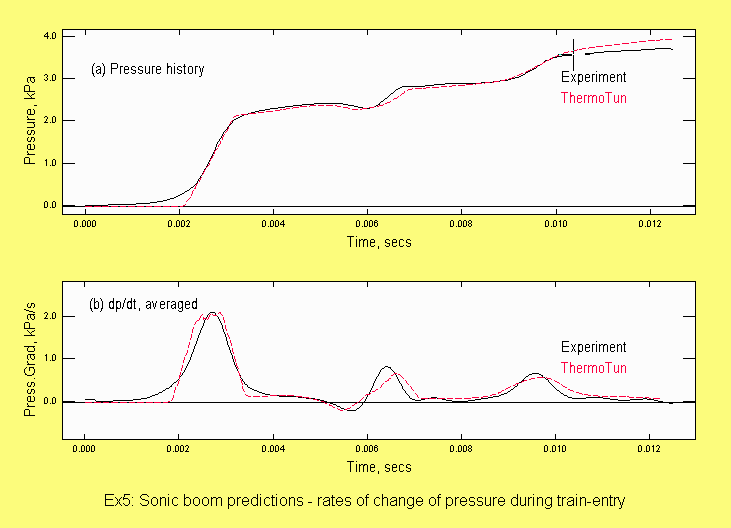

 ThermoTun is usually used to study variations in velocity, pressure and temperature. Usually, it is required to predict only the amplitudes of such changes, not the associated rates of change of pressure, etc. For the highly specialised case of predicting the amplitudes of sonic booms, however, it is necessary to be able to predict rates of change of pressure as well as amplitudes.
ThermoTun is usually used to study variations in velocity, pressure and temperature. Usually, it is required to predict only the amplitudes of such changes, not the associated rates of change of pressure, etc. For the highly specialised case of predicting the amplitudes of sonic booms, however, it is necessary to be able to predict rates of change of pressure as well as amplitudes.
It is important to realise that ALL one-dimensional methods are fundamentally unable to predict rates of change of phenomena that exhibit strong three-dimensional behaviour. Thus, although ThermoTun is able to predict sustained rates of change of pressure such as those associated with travel along a flared entrance (see Ex-1), it should not normally be used to infer short-lived rates of change during sudden flow changes. This example illustrates a special exception to this rule for the particular case of train nose entry to an abrupt portal.
Schultz & Sockel (1991) showed how the true pressure rise caused by a real train nose entering a tunnel can be reproduced by one-dimensional code if the true shape of the nose is replaced by an empirically-determined, one-dimensional equivalent shape. It is now known that the appropriate empirical adjustment is dependent upon the train speed as well as upon the geometry of both the train nose and the tunnel portal. Further information is given by Vardy & Howe (2009).
The upper box of graphs shows pressure-time histories in the tunnel downstream of its enlarged entrance region and the lower box shows associated rates of change of pressure. Comparisons are shown between ThermoTun predictions and measurements in a laboratory model. In addition to the sudden rise caused by nose-entry through the portal, significant rates of change occur because of wave reflections and the train nose crossing the end of the enlarged region.
Schultz,M and Sockel,H (1991) Pressure transients in short tunnels. Proc 7th int symp on the Aerodynamics and Ventilation of Vehicle Tunnels, Brighton, UK, 27-29 Nov, 221-237
Vardy,AE & Howe,MS (2009) Rapid prediction of train nose entry pressure gradients. Proc 13th int symp on the Aerodynamics and Ventilation of Vehicle Tunnels, New Brunswick, USA, 13-15 May, BHR Group, 429-443
